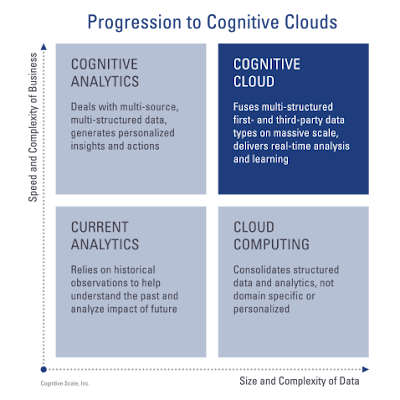Twitter Feed
Amazon’s Jeff Bezos on Cloud Computing
Amazon’s Jeff Bezos on Cloud Computing How and when Amazon began its cloud computing effort.Why Amazon has become an innovator with Amazon Web Services and how it relates to their…
Dataline, IBM, Google, Northrop Grumman on Cloud Computing
My company, Dataline LLC, in cooperation with IBM, Google and Northrop Grumman Mission Systems, is sponsoring an educational series entitled “Cloud Computing in a Netcentric Environment“. The series will be…
EMC Studies Cloud Computing Security
Storage firm EMC has joined the Daoli Trusted Infrastructure Project which conducts research into “trust and assurance” in cloud computing environments. The team’s research will focus on cloud computing, trusted…
The Cloud Computing Marketplace
For explaination and details see Understanding the Cloud Computing/SaaS/PaaS markets: a Map of the Players in the Industry by Peter Laird, Kent Dickson, and Steve Bobrowski from Oracle. Update: Please…
Key cloud computing concerns by CXO’s
Key cloud computing concerns by CXO’s attending the Enterprise 2.0 Conference in Boston were addresed in a June 9th panel of executives from Google, Amazon Web Services (AWS), and Salesforce.com.…
IBM Cloud Computing Center
On June 5th, IBM announced it will establish the first Cloud Computing Center for software companies in China, which will be situated at the new Wuxi Tai Hu New Town…
EUCALYPTUS – An Open Source Cloud Computing Platform
Elastic Utility Computing Architecture for Linking Your Programs To Useful Systems (EUCALYPTUS) is a new project that seems to be trying to put an “open source” flavor to cloud computing.…
The Honorable John G. Grimes Speaks about Cloud Computing
Today I had the pleasure of hearing The Honorable John G. Grimes, Assistant Secretary of Defense for Networks and Information Intergration and Department of Defense CIO, speak on some key…
Amazon leads Google into the cloud (So what else is new)
In this May 1, 2008 Globe and Mail Update article, Mathew Ingram provides an excellent comparison of Amazon and Google’s cloud computing initiatives. Bottom line: Amazon leads the pack with…
Web 2.0 Expo – What is Cloud Computing?
For some interesting views, take a look at these video interviews on what is cloud computing. These were done during the recent Web 2.0 Expo, April 22-25 in San Francisco,…
According to the IBM Institute for Business Value the market will see a rapid adoption of initial cognitive systems. The most likely candidates have moved beyond descriptive and diagnostic, predictive and routine industry-specific capabilities. 70 percent of survey respondents are currently using advanced programmatic analytics in three or more departments. In fact, the widespread adoption of cognitive systems and artificial intelligence (AI) across various industries is expected to drive worldwide revenues from nearly US$8.0 billion in 2016 to more than US$47 billion in 2020.
The analyst firm IDC predictsthat the banking, retail, healthcare and discrete manufacturing industries will generate more than 50% of all worldwide cognitive/ AI revenues in 2016. Banking and retail will each deliver nearly US$1.5 billion, while healthcare and discrete manufacturing will deliver the greatest revenue growth over the 2016-2020 forecast period, with CAGRs of 69.3% and 61.4%, respectively. Education and process manufacturing will also experience significant growth over the forecast period.
th’s ability to replicate intuitive experiences provides a number of opportunities within sentiment analysis. With its ability to understand scenes and context, it can decipher how people are feeling based off facial expressions or voice stress levels.
- Need robust and simplified data classification processes in order to more easily deliver industry and business model specific value;
- Require the implementation of information technology security controls that are driven by data value and role based access control paradigms; and
- Leverage software applications that should be developed using ISO 27034 which is a multi-part standard on specifying, designing/selecting and implementing information security controls through a set of processes integrated throughout an organization’s Systems Development Life Cycle/s (SDLC).
( Thank you. If you enjoyed this article, get free updates by email or RSS – © Copyright Kevin L. Jackson 2016)
Cloud Computing
- CPUcoin Expands CPU/GPU Power Sharing with Cudo Ventures Enterprise Network Partnership
- CPUcoin Expands CPU/GPU Power Sharing with Cudo Ventures Enterprise Network Partnership
- Route1 Announces Q2 2019 Financial Results
- CPUcoin Expands CPU/GPU Power Sharing with Cudo Ventures Enterprise Network Partnership
- ChannelAdvisor to Present at the D.A. Davidson 18th Annual Technology Conference
Cybersecurity
- Route1 Announces Q2 2019 Financial Results
- FIRST US BANCSHARES, INC. DECLARES CASH DIVIDEND
- Business Continuity Management Planning Solution Market is Expected to Grow ~ US$ 1.6 Bn by the end of 2029 - PMR
- Atos delivers Quantum-Learning-as-a-Service to Xofia to enable artificial intelligence solutions
- New Ares IoT Botnet discovered on Android OS based Set-Top Boxes



